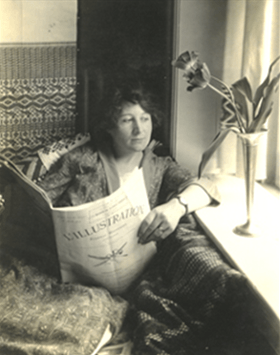Dorothy Popenoe facts for kids
Quick facts for kids
Dorothy Popenoe
|
|
|---|---|
 |
|
| Born |
Dorothy Kate Hughes
19 June 1899 |
| Died | 30 December 1932 |
| Occupation | Archaeologist Botanist Scientific illustrator |
Dorothy Popenoe (born Dorothy Kate Hughes on June 19, 1899) was a talented English scientist. She was an expert in many fields, including archaeology (studying ancient cultures), botany (studying plants), and scientific illustration (drawing plants and artifacts for science). She made important discoveries about ancient civilizations and plants, especially in Central America.
Contents
Early Life and Plant Studies
Dorothy Popenoe was born in Ashford, Middlesex, UK, in 1899. She went to the Welsh Girls' School in Ashford. When World War I began, she joined the Women's Land Army. This group helped with farming while many men were away fighting.
Working at Kew Gardens
In 1918, Dorothy started working at Kew Gardens in London. This is a famous place for studying plants. She was an assistant to a scientist named Dr. Otto Knapf. While working there, she also studied botany at the University of London. She became very skilled at identifying and understanding different types of grasses.
Moving to the United States
In 1923, Dorothy received an invitation to work in the United States. She joined the staff of the United States National Herbarium. This is a large collection of preserved plants used for scientific study. She focused on studying cultivated bamboo plants. During her time in Washington, D.C., she met Wilson Popenoe. He was an agricultural explorer and an expert on tropical fruits. They got married on November 17, 1923.
Life and Discoveries in Honduras
In 1925, Dorothy's husband got a job with the United Fruit Company. He became the director of agricultural experiments. This meant the family moved to Tela, a town on the Atlantic Coast of Honduras.
Becoming an Archaeologist
Living in Honduras sparked Dorothy's interest in archaeology. She started working on several ancient sites in the country. In 1927, she explored the Maya fortress of Tenampa. She also worked at a site called Cerro Palenque.
Excavations at Playa de los Muertos
Between 1928 and 1932, Dorothy Popenoe worked on a very important archaeological site. This was a pre-Columbian cemetery called Playa de los Muertos (which means "Beach of the Dead"). She carefully dug up and studied many ancient artifacts and burials from this site. Her work helped scientists learn a lot about the people who lived there long ago.
Her Legacy
Sadly, Dorothy Popenoe passed away suddenly in December 1932. She was unable to finish all her work at Playa de los Muertos. However, the results of her excavations were published after her death in 1934. Another archaeologist, Doris Zemurray Stone, later included Dorothy's detailed analysis of the materials in her own book, "Archaeology of the North Coast of Honduras," published in 1941. Dorothy Popenoe's work greatly contributed to our understanding of ancient cultures in Honduras.
See also
 In Spanish: Dorothy Kate Hughes para niños
In Spanish: Dorothy Kate Hughes para niños

